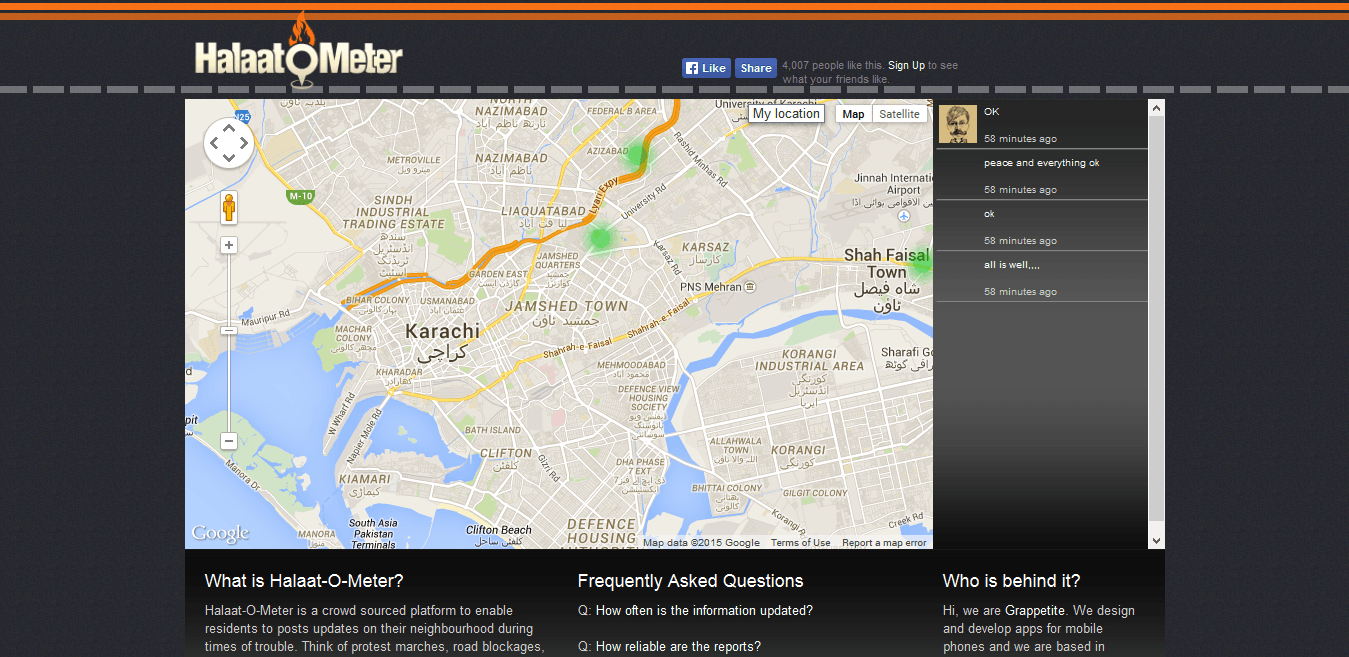Ever felt the need to be up-to-date about the conditions of a certain neighborhood in the aftermath of a protest, violent event or any other disturbance? Or find out if the traffic situation on a highway or in an area has improved since there was news about a protest on that road? Recent political activism in Pakistan has kind of made sure that the entire country asks these questions on a regular basis. When people are thinking of going to a certain area or taking a certain road on the way to somewhere, there is often no place to find up-to-date information on what the situation is.
Fortunately, there’s an app (and a website) for that, and it’s called Halaat-o-meter.
How does it work?
Halaat-o-meter is a crowdsourcing solution that aims to collect timely information on what the situation is like and allows users to access the latest positive/negative information reported from all areas on a map. A green colored shade signifies positive news while a red one shows a negative incident. While the platform is provided by the founders of the website, both the source and viewership of the information is dependent on the public.
The website is using the Google Maps platform as the main tool for users to look at reports from different areas. You can sign in using your Facebook profile, allow the website to detect your location and post information.
Potential problems
While the obvious problem with such an arrangement is the reliability of the information being reported and possible fake reporting, the real issue is how much this website catches on with the general public. Fake reporting can easy be spotted when it is not being corroborated by confirmations – the website tries to use your computer’s location as a means of verifying that you are where you say you are.
One design issue was that the website does not have a “Sign In” button on the website, and the only way to sign in is through a pop-up window that gets Facebook verification when you open the website. With pop-ups blocked on many web browsers, this might not be the best strategy to make the website user-friendly.
One way to help it catch on would be to connect the map and website to social media websites. Internet users spend a lot of time on these websites and if there was an easy way to link their status updates or tweets to a map, and pick up reports that way, Halaat-o-meter can gain a lot of traction.
Current Status
As of now, the website seems to have not caught on at all. It has 4,000 likes on Facebook, but the map has not shown any new information in the past two days. Maybe it’s because nothing of significance has happened in Karachi in the past two days, but the troubling thing is that the last 4 comments have been the same for the past two days, only that the website has shown them to be only 4-6 hours old each time. This is an understandable ploy to show that someone recently used the website, but if the website hasn’t gained any traction, maybe it is time to go back to the drawing board and do the launch a bit differently.
One way to do that could be to engage students at different academic institutions and young professionals at different workplaces to become ambassadors of this website/platform and post updates regularly and share it on their social media pages.
Great Idea
It’s great to see that the team behind Halaat-o-meter stepped up to the task of executing an idea that I am sure that a lot of people would have thought of. The next step is execution and enabling it to become a long-term phenomenon – that part of the journey requires a different set of skills and strategy.
Connect With Them


